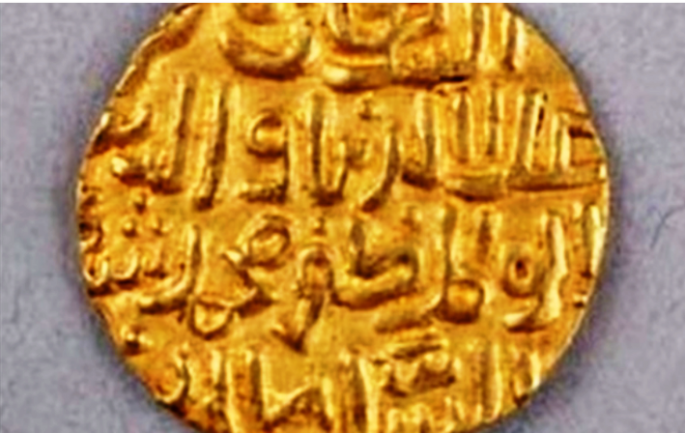Authorities in Hunan Province in Central China are offering a reward to anyone who can decipher the inscription on the back of six ancient gold coins, the Xinhua News Agency reported.
The 10,000-yuan ($1,500) reward was offered by the Cultural Relics Bureau of Jinshi City to anyone who can explain the mystery of the coins, housed in the city's museum.
According to the report, the ancient coins, which are classified as first-level national cultural relics, were contained in a small white glazed pot, unearthed at a farm in Henan in the 1960s.
Since they were sent to the museum in the 1980s, archaeologists have been baffled by the inscription on the coins, the report said.
According to Peng Jia, bureau director, the coins were manufactured using the Greek coinage method during Delhi Sultanate period, sometime in the middle of China's Yuan Dynasty (1271-1368).
Peng said that the coins' front was inscribed with a rare form of Arabic writing, mentioning the name of a King or a monarch title.
"But the information on the back is difficult to decode," Peng said. "I have consulted Chinese and foreign experts, but to no avail. I hope the answer will be revealed one day."
On Jan. 9, Chinese archaeologists have also recovered more than 14,000 relics from an ancient cargo ship salvaged in 2007 from the South China Sea.
According to a different Xinhua report, the team of archaeologists has also excavated hundreds of gold, silver and copper relics and about 17,000 copper coins.
Liu Chengji, deputy head of the Guangdong Provincial Institute of Cultural Relics and Archaeology, said that most of the relics include porcelain products, such as pots, bottles, bowls and plates, produced by then famous kilns in places now known as Fujian, Jiangxi and Zhejiang.
The coins were recovered from the well-preserved remains of "Nanhai No. 1" ("South China Sea No. 1") that dates back to the early Southern Song Dynasty (1127-1279). The remains were about 22 meters long and 9 meters wide.



























